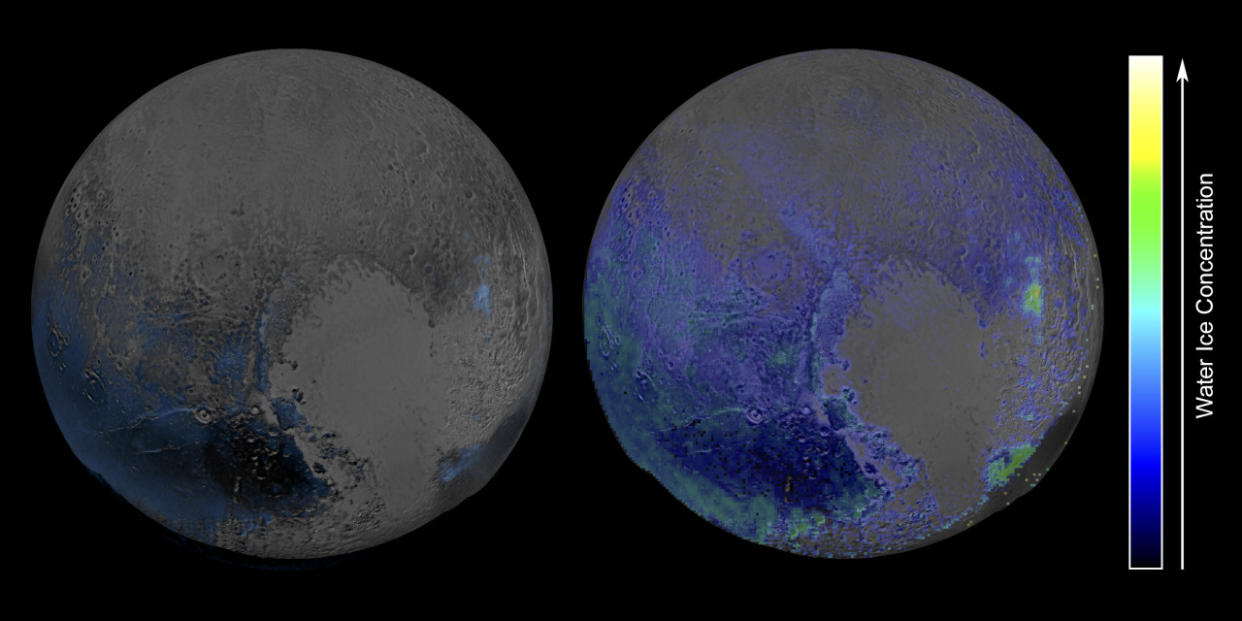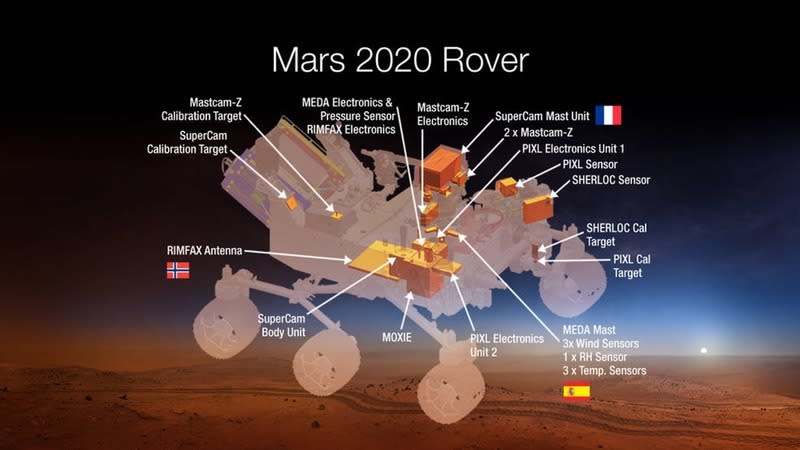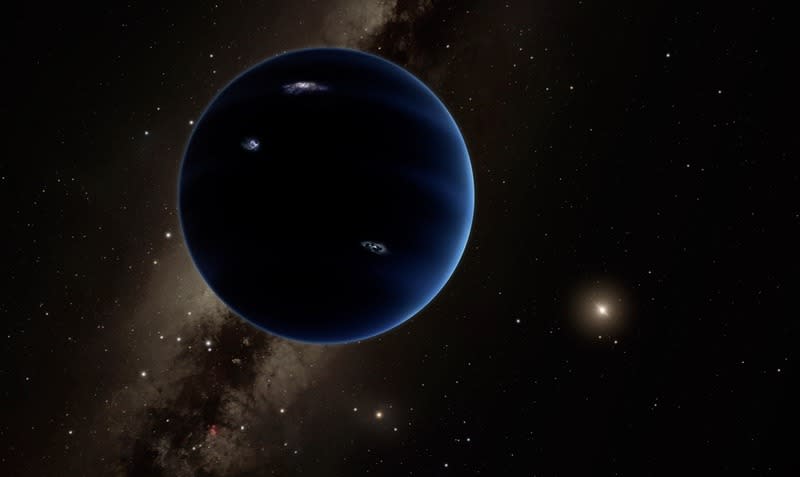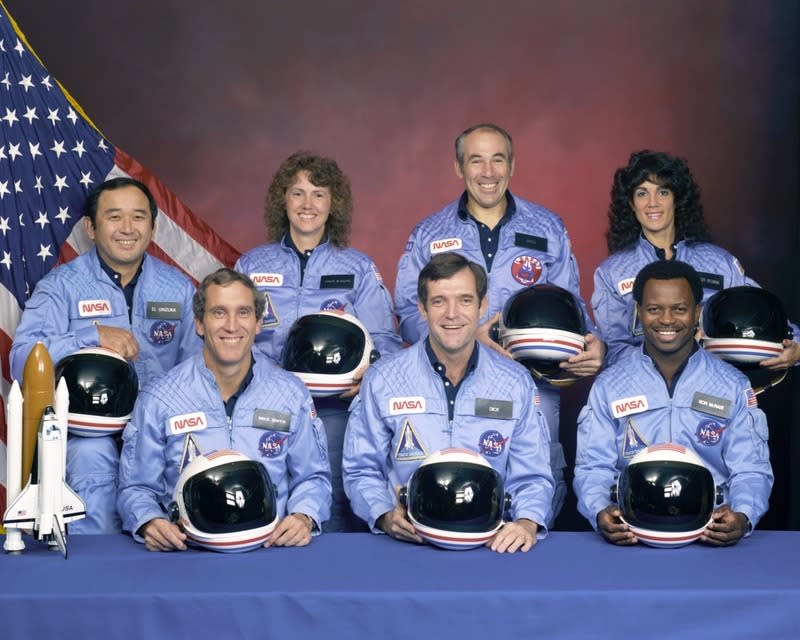This Week in Space: Weird Pluto and No Plan for Mars

Is there water on Pluto? (Image: NASA/JHUIAPL/SwRI)
We’re lucky to have Pluto. If people in the early 20th century hadn’t mistakenly thought Pluto was a major planet, much larger than it actually turned out to be, we might have declared it a boring icy body of the outer solar system and not gone to the trouble of sending the New Horizons probe to fly past it.
And we would mean we’d have missed out on the real Pluto — a beautiful icy body that continues to offer surprises months after New Horizons flew past it. This week, yet more new data from New Horizons revealed that Pluto has more water than originally thought. Water on Pluto isn’t like any water on earth: It’s so cold out there that it’s ice as hard as a rock.
Initially, scientists thought that there wasn’t much water on the surface of Pluto, because they were using a technique that could get confused by ice made from methane. A new technique offers a greater sensitivity to water ice, even when it’s mixed with other kinds of ices. It’s revealed that large sections of Pluto’s surface are rich in water. But other sections — including the western side of Pluto’s “heart” and far north — appear to be entirely water free.
Speaking of Pluto’s “heart” (informally named Sputnik Planum), another report from New Horizons this week suggests that some of the small hills on it are actually water-ice chunks floating like icebergs on a sea of frozen nitrogen. Pluto’s extreme cold makes ice behave as rocks do on earth, and nitrogen to behave like ice. The ice “hills” were probably carried down to Sputnik Planum by glaciers made of frozen nitrogen, and washed into the sea.
A plan for Mars?
NASA has been talking for a while about a future Mars mission in the context of its two major crewed spaceflight initiatives, the Space Launch System rocket and Orion capsule. There’s research being done all over the world about how to survive the trip to Mars, live there, and even drive around there.

Artist’s concept of the next-generation Mars Rover. (Image: NASA)
But does NASA have an actual step-by-step plan to get to Mars? On Wednesday, the House Subcommittee on Space challenged the agency’s lack of a plan to get to Mars during a public hearing.
As representatives and expert witnesses pointed out, NASA doesn’t have a public road map and hasn’t clearly defined some must-have hardware for the trip. It’s understandable that the initial steps toward establishing an ability to simply get into space — the Space Launch System and Orion — were a priority for NASA.
But it may be time for the agency to put a stake in the ground and explain how it thinks it’s getting to Mars, and if it needs to visit the Moon or an asteroid along the way.
Planet Nine, or not
A few weeks ago astronomers Konstantin Batygin and Mike Brown declared it a strong possibility that there’s a large planet orbiting in the extreme outer reaches of our solar system. Scientists tend to be skeptical by nature, so while there was a lot of excitement about the idea of a Planet Nine, in the intervening weeks there’s also been some criticism.
For example, astrophysicist Ethan Siegel argued strenuously that there are many other explanations for the effects that Batygin and Brown were using to infer the existence of Planet Nine, and that their evidence is still too scant.

Ghost planet? (Image: Space.com)
In the true spirit of scientific skepticism, Brown himself posted an article called “Why Planet Nine might not exist,” listing all of the reasons why he and Batygin might be wrong. “My single biggest worry is that perhaps — just perhaps — we have been fooled into seeing a pattern where none exists,” he wrote. Still, Brown remains confident that his and Batygin’s supposition is correct.
Meanwhile, astronomers are scanning the skies looking for direct evidence of Planet Nine — dark, cold, and extremely far from the sun. If Planet Nine does exist, the search for it could take as long as five years.
In memorium
This time of year marks an unfortunate confluence of the three major space accidents in NASA history: Apollo 1, Challenger, and Columbia. The beautiful Astronaut Memorial at Kennedy Space Center honors those who gave their lives to explore space — and not just the 17 astronauts of the three high-profile accidents, but also seven others.
This year marked the 30th anniversary of the Challenger disaster, an indelible moment for those of us who were alive in 1986. Though the explosion itself didn’t kill the crew, the Space Shuttle’s design didn’t allow for any in-air escape from a damaged craft. The Challenger’s legacy lives on in a commitment to teaching children about science and space.

The Challenger crew. (Photo: NASA)
On Feb. 1, 2003, the Space Shuttle Columbia was destroyed during reentry, due to damage to the craft that occurred on liftoff. The accident effectively shut down the aging Shuttle program and, like Challenger, sparked a full investigation. It turns out that even if NASA had discovered the problem with Columbia before reentry, it would have been spectacularly difficult to save the crew.
Given the constant occupancy of the International Space Station, there are always some people risking their lives in the vacuum of space in order to further human understanding and achievement. This is the time of year to recognize the risks they take and remember those who lost their lives in the pursuit of space exploration.
Jason Snell hosts the Liftoff podcast on Relay FM and regularly writes about technology at Six Colors.

